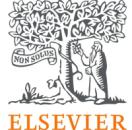Song, Y., Che, X., Wang, Z., Li, M., Zhang, R., Wang, D., & Shi, Q. (2024). Augmentation of rehabilitation after ACL reconstruction using radial extracorporeal shock wave therapy (rESWT). BMC Musculoskeletal Disorders, 25(57). https://doi.org/10.1186/s12891-024-07177-8
This randomized controlled trial evaluated the effectiveness of radial extracorporeal shock wave therapy (rESWT) in enhancing rehabilitation outcomes for patients undergoing anterior cruciate ligament reconstruction (ACLR). Seventy-two patients were assigned to receive either standard rehabilitation with rESWT or with sham rESWT, measuring outcomes such as pain, joint function, and mobility. Significant short-term improvements were noted in the rESWT group at 3 and 6 weeks, though no long-term differences were observed at 24 weeks. The findings suggest that rESWT may benefit early ACLR rehabilitation by reducing pain and improving function.


